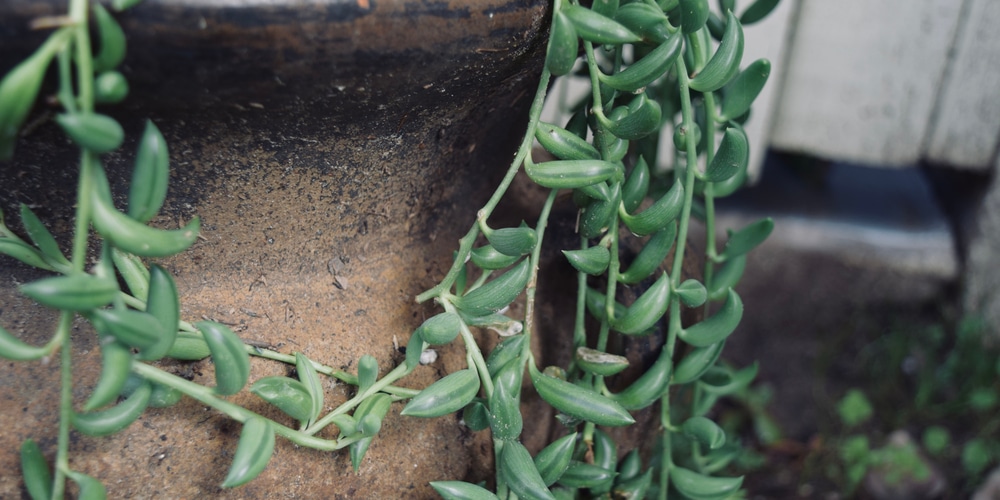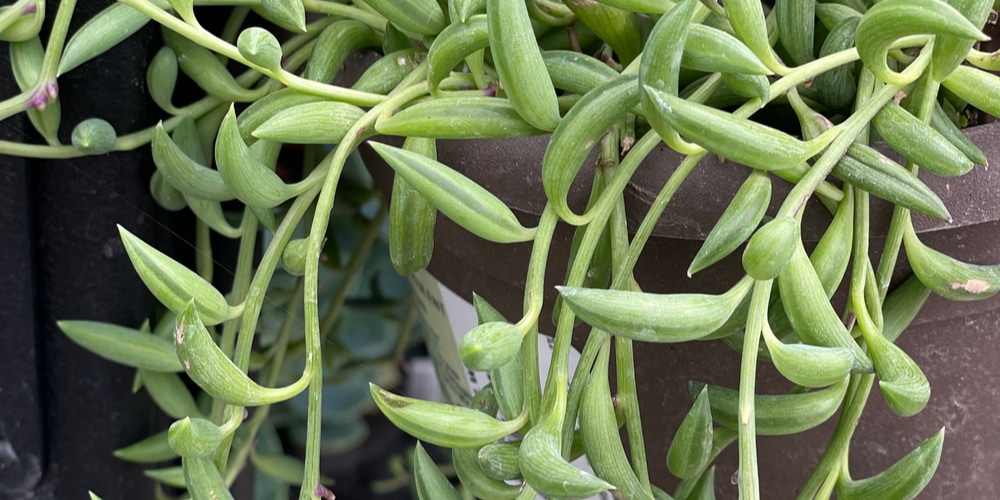String of bananas is a succulent vine that usually boasts banana-shaped leaves plump with moisture. So, if they suddenly become shriveled, you must address an underlying issue.
Below are some of the most common reasons why string of bananas becomes shriveled and solutions you can implement.
Excessive High Heat Exposure

String of bananas has a high tolerance for a range of temperatures. They can survive temperatures in the 30s as long as it doesn’t drop below 32 degrees Fahrenheit.
Similarly, string of bananas holds up well in high heat, thriving in temperatures as high as 110 degrees Fahrenheit.
But shriveling problems can arise when a string of bananas plant undergoes a period of cooler weather followed by a temperature increase to excessive heat. Such a temperature change can cause your plant to go into shock, causing its leaves and stems to shrivel.
On the bright side, the string of bananas plant usually returns to its normal, non-shriveled state as long as it has the appropriate growing conditions and not too much sunlight.
Nevertheless, you can prevent this problem from happening in the future by bringing your string of bananas inside when the forecast calls for an extreme temperature jump.
Dry Soil
It doesn’t take an experienced gardener to know that a plant will wither when it doesn’t get enough water. But caring for a string of bananas plant is tricky, given that its succulent nature requires little water to start with, as it’ll die from overwatering.
If you’re watering your string of bananas less than once every two or three weeks, there’s a good chance that your plant is becoming shriveled from a lack of water.
We recommend setting a reminder on your phone to water your plant every two or three weeks. Be sure to feel the soil before watering; it should be completely dry.
From there, give your string of bananas a single deep watering. If a lack of water is causing them to wither, you’ll likely see them pop back to life as long as you catch the problem early enough.
Too Much Sunlight
String of bananas needs a respectable five to six hours of sunlight daily. But if they get too much sun—especially direct sun—they could get sunburn and shrivel.
Ideally, your plant should get sunlight in the morning and shade in the afternoon. So, if you’re growing string of bananas plants outside, you might need to transplant them to a more suitable area.
Should you keep string of bananas indoors, be mindful about how much sun hits its leaves. These plants can get sunburned and shrivel indoors just as easily as outside.
Root Rot
Root rot is a disease that occurs from overwatering string of bananas. It’s a common issue among gardeners, given that these plants have such low watering requirements that it can feel like you’re killing them.
But root rot can cause your plant to shrivel and die. The shriveling leaves usually don’t have a dry appearance. Instead, it’s common for the leaves to wilt from wet spots and water saturation.
Depending on how early you catch the problem, you might be able to save your plant. If you suspect root rot, stop watering until the soil dries out. Then, follow the water recommendations we shared in the “dry soil” section.
The Bottom Line
Discovering that your string of bananas plant is shriveling can be alarming. But the good news is that it’s often possible to reverse the issue if you catch it quickly enough.
By providing your string of bananas with the right care including balance of temperature, water, and sunlight, you’ll soon be on your way to having a non-shriveled plant.
